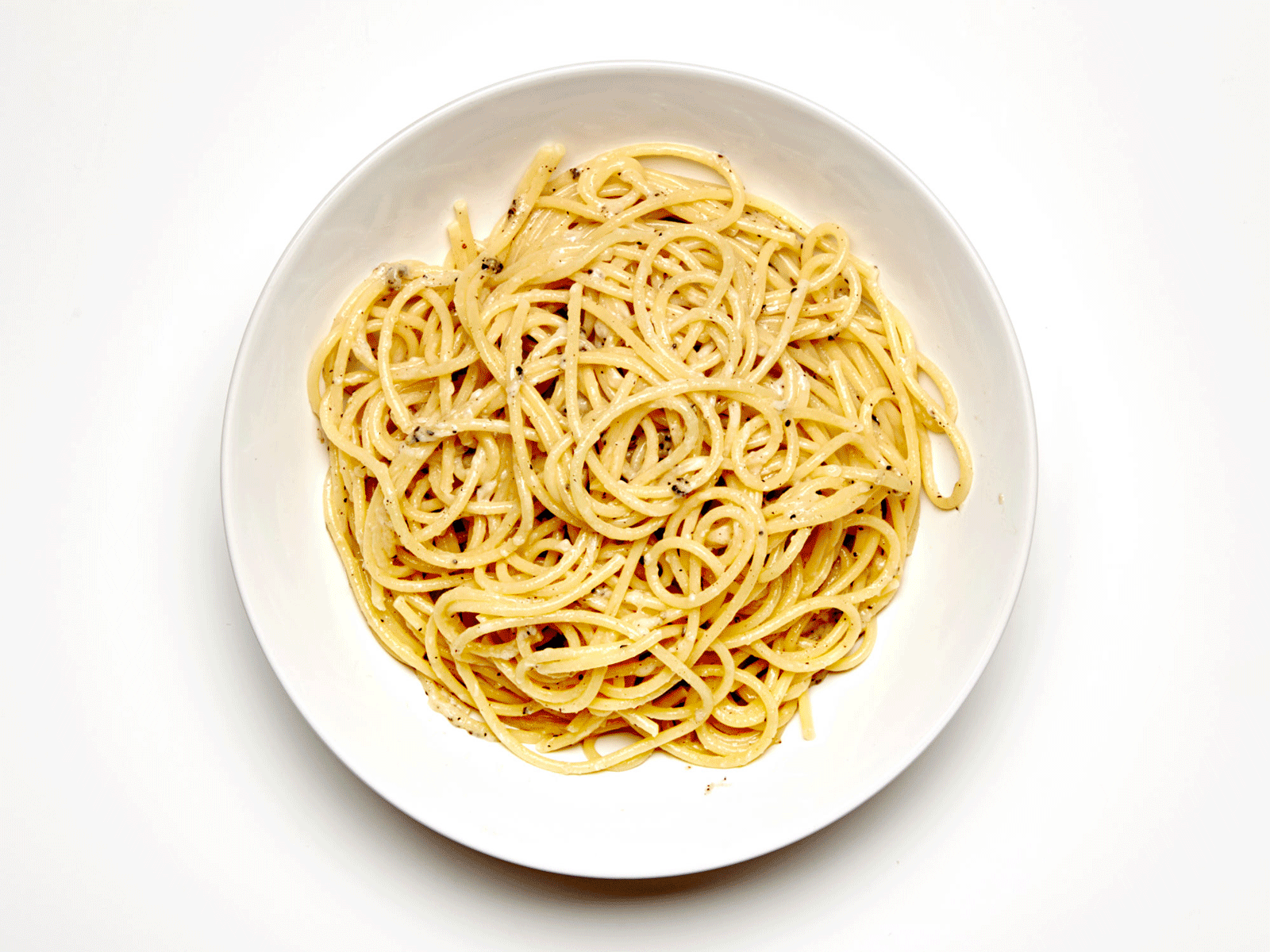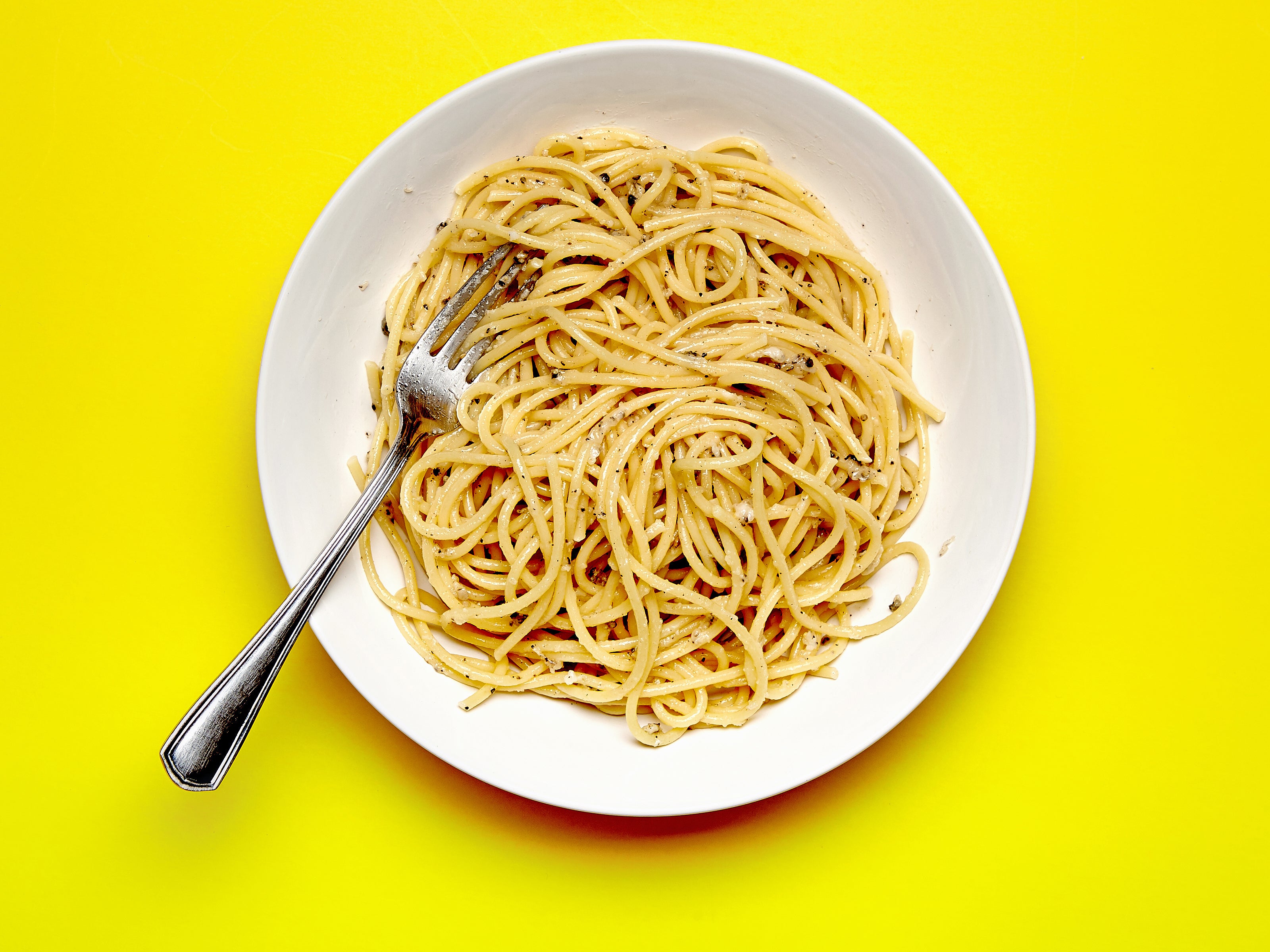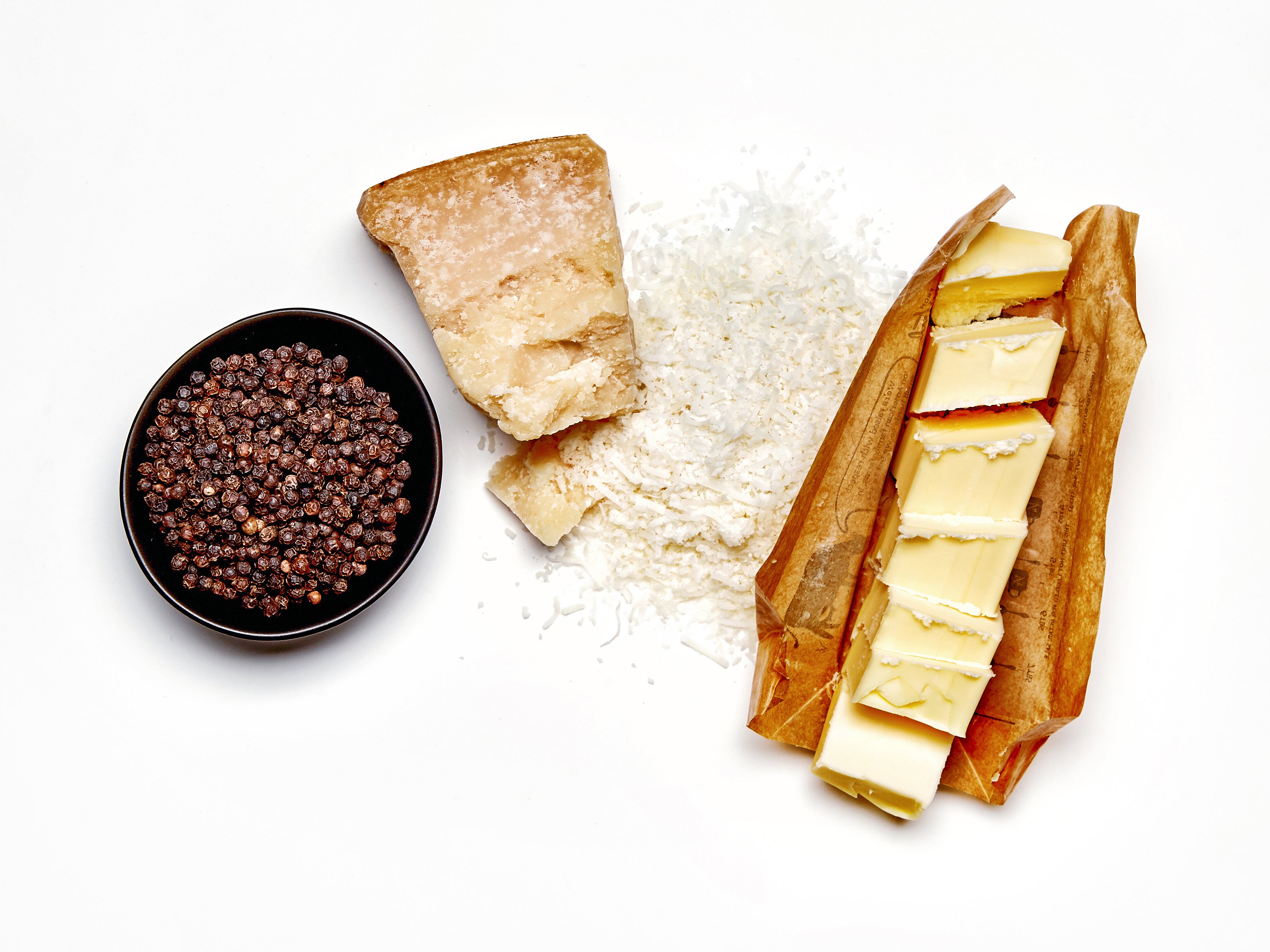
It all started with a Roman pasta dish, but now the minimalist flavor combination of grated Pecorino Romano and black pepper can be found in everything from chicharrones to shortbread cookies.
In early 2016, chef David Chang debuted a dish called ceci e pepe at his new Italian-Asian restaurant, Momofuku Nishi. His take on the popular Roman pasta dish cacio e pepe (literally “cheese and pepper”) replaced the traditional cacio with a fermented chickpea (ceci) paste that mimicked the original’s silky texture and savory, flinty flavor. Diners and critics flipped out over Chang’s culinary sleight of hand, and the dish remains a menu favorite at Nishi today.
While Chang’s variation on cacio e pepe is inspired and without question innovative, he is hardly alone in bending the rules of the traditional recipe. Over the past several years, cacio e pepe has joined the ranks of America’s starchy obsessions, and remixes of the ancient dish have only accelerated. Today home cooks can access countless articles, cookbooks, and instructional videos promising cacio e pepe perfection and are regularly greeted with sound recipes like Smitten Kitchen’s cacio e pepe potatoes anna (which merges the French layered potato cake with copious amounts of pecorino and black pepper), or the sweet-meets-savory cacio e pepe shortbread featured in Food52’s Genius Desserts cookbook.
In restaurants, meanwhile, chefs are increasingly turning out dishes like the cacio e pepe cauliflower at New York City’s Blenheim, the pan-fried cacio e pepe spaetzle at Wursthall in San Mateo, the cacio e pepe chicharrones at San Francisco’s True Laurel, and the cacio e pepe enoki mushrooms at Serpico in Philadelphia. It’s a lot of attention being paid to what is, essentially, a plate of cheesy noodles.
Like many classic Italian pastas, cacio e pepe’s provenance is murky. Some say it evolved centuries ago in the collective, uncredited nonna kitchen, while others claim it was a preferred dish of Lazio’s shepherds—since the ingredients were easily portable and quick to prepare. What’s clear is that the dish is regarded, as Mona Talbott writes in The Oxford Companion to Cheese, as “one of the sacrosanct pastas of Rome…one of its canonical dishes.”

The recipe is simple in theory—a shortlist of pantry ingredients. It consists of pasta (most often a long style, like tonnarelli, bucatini, or spaghetti), a pile of grated sheep’s-milk Pecorino Romano, and an assertive amount of crushed black pepper. Some contemporary cooks substitute Parmesan, but true cacio e pepe benefits from the way Pecorino’s bright salinity plays off the pepper’s tingle and subtle heat. Together, the ingredient trio melds into a creamy dream. But while anyone can make cacio e pepe, like a classic French omelet, perfecting the dish takes skill, patience, and a Gladwellian 10,000 hours of practice. Or close.
To produce the ideal texture, the cheese, black pepper, and steaming noodles are anointed with a hearty splash of salted pasta cooking water (indeed, the dish almost single-handedly demonstrates the importance of reserving pasta water after draining) and then tossed quickly and confidently until the sauce emulsifies and clings to each strand. Too much water and you end up with a puddle of broken sauce. Toss too passively and the cheese contracts into unseemly clumps. But when everything comes together, a twirl of pure ambrosia awaits.
Cacio e pepe is currently enjoying a moment in the Italian capital as well. “It emerged from oblivion in the early part of this century,” says Maureen Fant, an Italian culinary historian who coauthored, among other books, Sauces and Shapes: Pasta the Italian Way. According to Elizabeth Minchilli, the author of Eating Rome and the forthcoming The Italian Table, in the post–World War II era, humble family recipes fell to the wayside in favor of “fancier and richer” pasta dishes, like penne alla vodka and rigatoni alla norcina, which are made with cream. But in recent years, Romans have shifted back toward the homey foods of their past.
Roman restaurateurs also began to cater to tourists’ growing desire to eat authentic cacio e pepe at the source. Today the dish is virtually everywhere in Rome. “All of a sudden, all the even slightly foodie tourists were making the rounds of the better trattorias, comparing versions,” says Fant. “We Romans thought that was hysterically funny, that such a modest dish had become so important to people who had never heard of it till approximately the day before yesterday.”

Roman chefs have not experimented as robustly as their American counterparts with cacio e pepe’s applications as a flavoring. But some pizzerias employ the Pecorino-pepper combination as a topping for pizza or a filling for arancini.
At Serpico, chef Peter Serpico’s cacio e pepe enoki mushrooms were surprisingly not inspired by a memorable meal in a Roman restaurant, but by an enoki mushroom dish with egg yolk and sage he ate at Geist in Copenhagen. “It brought back memories of making cacio e pepe for my wife when she was pregnant with our daughter,” he said. His dish, which simmers the spaghetti-thin mushroom strands in Pecorino broth and drizzles them with black pepper oil, has the same flavor profile as cacio e pepe while remaining texturally light and delicate. Not surprisingly, he said, “Our guests love it—I don’t plan on taking it off the menu for a long time.”
For chefs and home cooks alike, adding a pat of butter to well-made cacio e pepe is unnecessary and generally frowned upon. But when it comes to creative applications, the cacio e pepe compound butter in Joshua McFadden’s cookbook Six Seasons: A New Way With Vegetables is one of the quickest and most satisfying ways to deliver the dish’s flavors to your mouth. McFadden suggests stirring the butter, which gets folded with grated Pecorino (and an unorthodox heap of Parmesan) and spiked with toasted peppercorns, into spring peas or mashed potatoes, or slicking it onto an omelet or steak.
Like other savory flavor obsessions of recent history (here’s looking at you, brown butter and truffle oil), cacio e pepe’s status is likely to flame brightly and then settle. But the dish itself, which perfectly captures the intersection of starch, umami, and heat, is timeless.